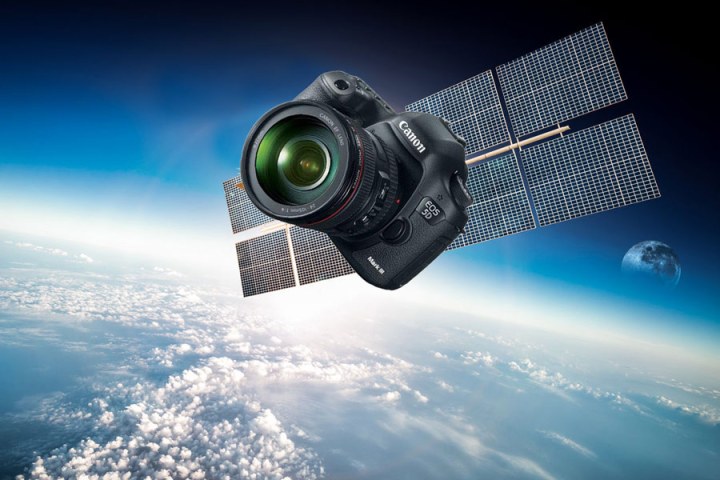
Being “based on the EOS 5D Mark III” doesn’t give us much, but presumably the satellite will use the same 22.3-megapixel full frame sensor and Digic 5+ processor found in that camera. Canon also confirmed with Digital Trends that the satellite’s lens would use “Canon optical technologies,” although no further details on the imaging tech were provided.
At about 143 pounds and measuring roughly 33 by 20 by 20 inches, Canon’s is one a growing number of relatively small satellites designed for expanded commercial use. Being smaller and simpler, this new breed of satellite is also much cheaper to produce. It is estimated that some 3,000 such devices will be put into operation over the next seven years, according to a report in the Nikkei Asian Review.
Canon’s prototype will orbit at an altitude of 500 kilometers (310 miles) and circle the Earth 15 time in a day. From that altitude, it will be able to resolve at least enough detail to see individual vehicles on the ground, according to the report.
Canon sees opportunities for the satellite in agriculture, natural disaster prevention, and for tracking shipping containers as they arrive in port. It presents an entirely new business opportunity for the company, which estimates it could generate $482 million by 2020 and twice that by 2030. Canon will test the prototype for two years before it begins operating satellites for commercial clients.



